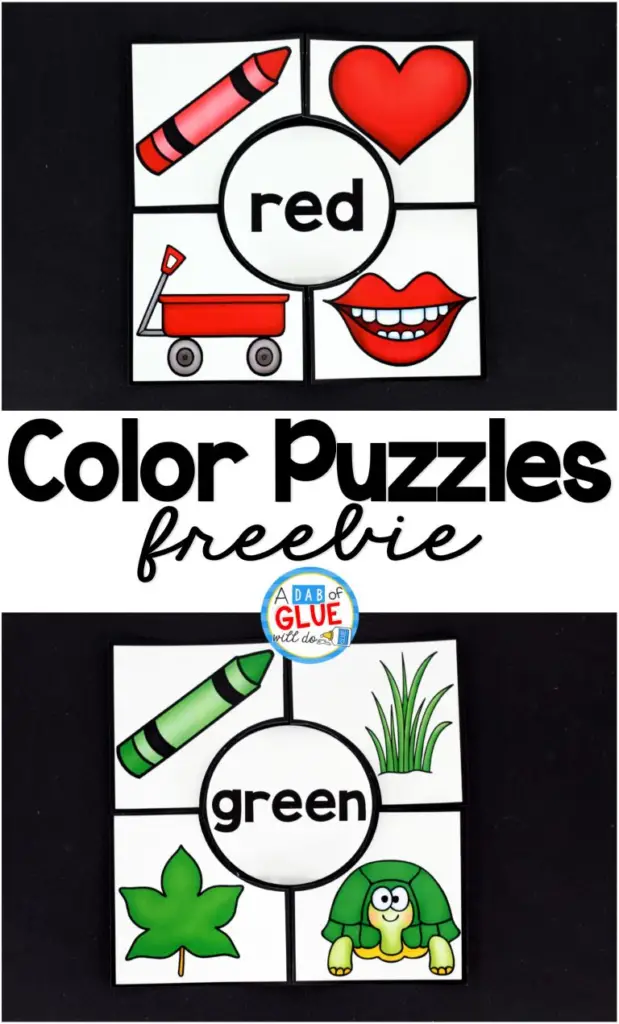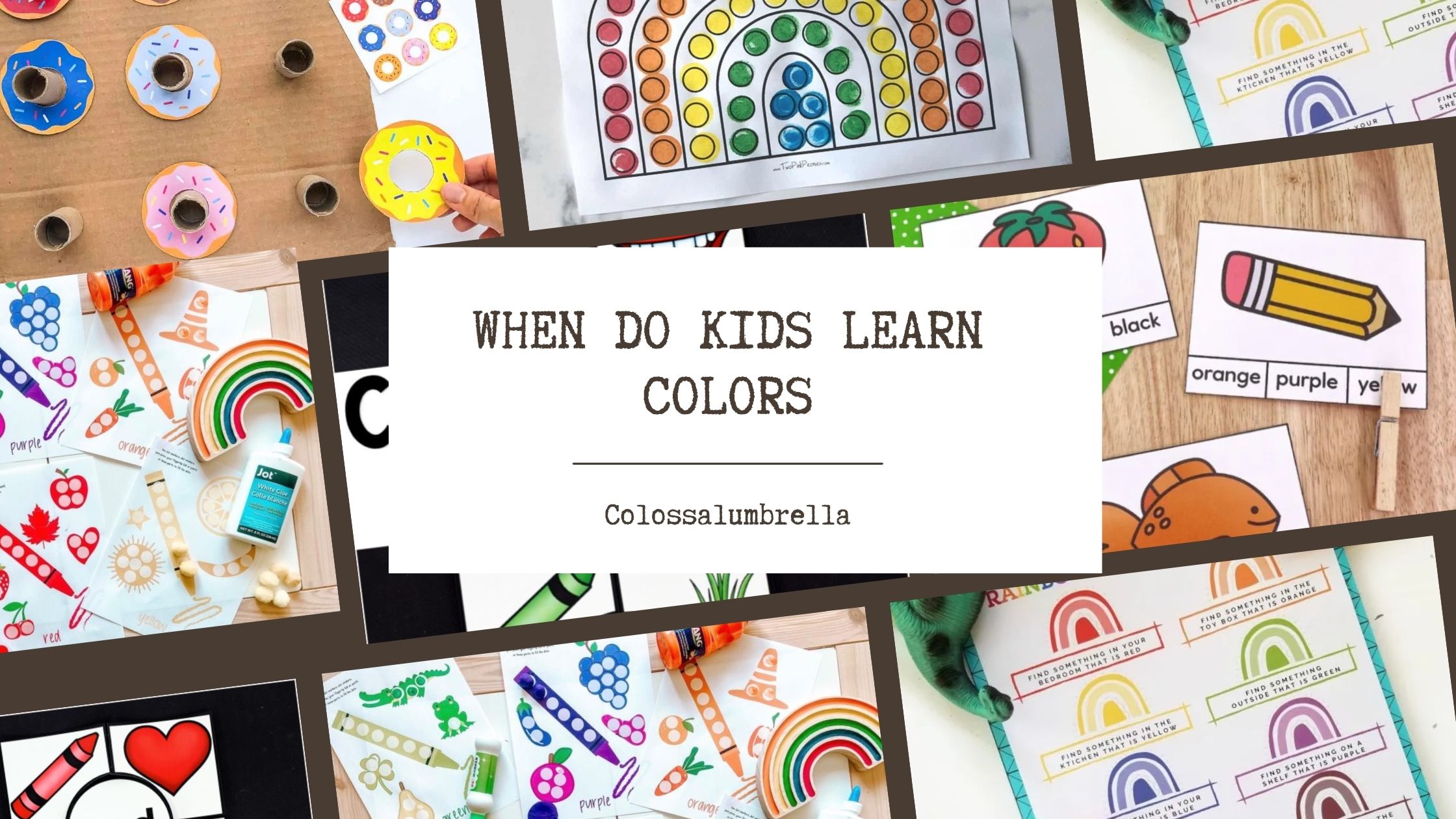A child’s early years lay the path for their future. These formative years will shape the adult they become. It is during this time that a child’s cognitive abilities are being developed, along with their social and emotional skills. Therefore, parents need to be aware of fun activities or games that can stimulate these learning areas. As parents it is important for us to understand that young children grow at different paces and all we could do is support them to achieve milestones. This article would give you an idea about when do kids learn colors and how to teach kids colors & shapes.
Introduction
There are so many different factors that come into play when determining what’s the best age for kids to learn colors. Kids are developing at a rapid pace and every day brings something new for them to learn about the world around them. Color recognition is one of those things that can be tricky for children. Some children pick it up faster than others, but by introducing them to color from an early age, you are increasing their learning potential and making it more likely they will recognize colors sooner than later.
So when do kids learn colors? The earlier you can introduce them, the better! Below is the the break down of everything you need to know about teaching your child the world of color.
Basics of colors and shape
Colors and shapes are two basic building blocks of learning. The color wheel is a visual representation of all the different colors found in nature and the shaping wheel is a depiction of the different shapes you can find in the world around you. This is why it’s important to educate your child on these concepts from a very young age. By recognizing these basic shapes and colors, your child will be more prepared for school and learning in general. When a child is familiar with these concepts, they are better prepared to recognize patterns, differentiate between shapes and colors, and know how to match them up.
An infant’s sense of sight develops right after they are born and continues growing stronger with time. They begin to see things in focus at around 6 months of age, which makes now a great time to start introducing your child to primary colors. See how color therapy helps adults and kids.
Why do we learn colors?
Kids’ ability to identify different colors is an essential skill for their development. But why is this so important? Why is craft and coloring important in education?
- Coloring Outside the Lines – Knowing your colors is the first step towards understanding other concepts, like numbers and letters.
- A Building Block – Understanding basic concepts like colors, shapes and sizes will help your child build a strong foundation for more advanced concepts later on.
- The Basics – Knowing the basics of color theory will help your child develop a better appreciation for art. This skill can also help with their design and architecture skills.
How to teach kids Colors
The best way to introduce your child to the concept of colors is through everyday activities. Things around us are a great way to introduce kids to their favorite colors. If your child is enamored with the color blue, surround them with blue objects such as blue books and toys. You can also do this with food, try making blue (or any color) cupcakes and letting your child eat them.
As kids get older, they can play games with friends or family members. There are tons of color-recognition apps out there that parents can use to quiz their kids. Alternatively, you can make a game out of it by using household items. For example, using a blue marker, write the name of a blue object on a piece of paper and let your child find it. Repeat with particular color, like red and yellow, and so on. This is a great way to introduce kids to the concept of color matching.
How to teach kids shapes
There are a few different ways to introduce the concept of shapes to your child –
- For younger children, you can start with playing with building blocks. They can experiment with different shapes and try building things with them.
- You can also make shapes out of food such as sandwiches and pizzas.
- Kids can also play games with friends or family members. There are many shape-recognition apps out there, which can be great for younger children.
- Additionally, you can make shapes out of household items such as boxes and pots.
- You can also try drawing shapes with your child using crayons or markers.
Color Concepts for different age groups
3 to 5 Years of age (preschool years)
Learning the concept of primary colors begins with toddlers’ earliest knowledge of color. Kids this age recognize differences between red, blue and yellow. They can also identify pink, purple and orange as variations of red, blue and yellow respectively. At this stage, toddlers can associate color with their feelings and emotions. While they may not be able to properly name these feelings, they can still identify their personal connection with each hue.
Toddlers also learn concepts like bigger, smaller and even and odd. Measuring, sequencing and matching are also skills that can be developed in this stage. Kids of this age can recognize primary colors in toys and other commonly used items. They’re also able to identify these colors in pictures and drawings.
6 to 8 Year Old
At this stage. kids know color names and recognize the three primary colors. They can also identify variations of blue, red and yellow in various objects. Kids in this stage can also sequence objects based on specific color and describe the number of primary colors that go into making a specific object. Kids in this stage can also mix and match primary colors to create secondary ones. They can also identify primary colors in everyday objects.
9 to 12 Year Old
At this stage, kids have a better understanding of the basic concept of color theory. They know color words and describe the three primary colors and understand how they can be combined to create secondary colors. Kids in this age group can also sequence objects based on their color and describe the number of primary colors that go into making a specific object. They can also match primary and secondary colors in visual prompts.
13+ Year-Olds
Kids in this age group have a better understanding of the basics of color theory. They can name, describe and understand the primary colors and how they can be combined to create secondary ones. Kids in this stage can sequence objects based on their color and describe the number of primary colors that go into making a specific object. Kids in this stage can also match primary and secondary colors in visual prompts.
When should toddler know colors
Teaching your child the basics of color theory is a regular part of their early education. What’s the best age to begin? It all comes down to your child’s ability to learn but usually it is between 15-18 months. For example, if your child has just begun to walk, you may want to hold off on introducing certain concepts. This gives time to develop their fine motor skills. It also gives them a chance to get used to the world around them and develop their sense of self.
Hands-on activities for teaching children about colors and shapes
One of the best ways to introduce shapes and colors to your child is through children’s books. There are many colorful books out there that children can enjoy, while learning something at the same time. Below are some color activities that would help your child in color identification and naming colors.
Doughnut matching activity
There’s a total of 9 different colored doughnut rings, all with colorful sprinkles. The activity also comes with 12 different mini donuts paper which are the “matching challenge” your kid needs to complete. This is a great activity for preschoolers. For instructions and free printable visit Mindymakes

Learning Colors with Do a Dot Printables – Free Preschool Color Learning Worksheets
Learn the colors with our fun color do a dot printables. Use our color learning worksheets and teach your children colors. Use them together with do a dot markers or loose parts. These are simple activities for color matching and also a perfect sensory activity. Get your Do a Dot Printable here. Simply signup and download your Printables

Color Words Clip Cards
These Color Words Clip Cards are a great way for your young learners to practice identifying color words while also developing fine motor skills. To use the cards, simply have your kids identify the color of the object on each card and then clip a clothespin onto the matching word. To download the Color Words Clip Cards, visit abcsofliteracy

Color Puzzles
This free resources comes with ten color puzzles. All you need to do is print, laminate (for durability), and cut out. Then they are ready to go. Color puzzles are great for preschool and kindergarten age students. Visit adabofgluewilldo.com to download free resources.

This rainbow scavenger hunt
This rainbow scavenger hunt will help you toddlers learn to identify colors and keep them entertained! Download many free scavenger hunt ideas for kids, preschoolers, and more. Get your free printable scavenger hunt. Print the scavenger hunt when you are ready to play with your toddler. You can leave it as a full sheet or cut it up into cards to make them smaller for your little one’s hands.

Rainbow dot marker printable
This rainbow dot marker printable is so much fun. Kids will love making their own colorful rainbow dot art with this printable! For step by step instructions and printable, visit Twopinkpeonies.

Conclusion
Knowing the right age to introduce your child to various concepts is essential for every child’s development. Keeping track of your child’s development and skill level is critical but it is recommended not to increase your expectations. It helps you tailor their education plan accordingly.
The best way to prepare your child for school is to educate them on the basics. This includes teaching colors and shapes. In this way, your child will be better prepared to recognize patterns, differentiate between shapes and colors, and know how to match them up. You can start introducing these new concept to your child at a very young age by surrounding them with objects of different shape and colors . You can also make shapes out of household items, such as boxes and pots. You can also try drawing shapes with your child using crayons or markers.

Wow, this is very interesting actually. I dont recall when i personally learned colors and shapes, but ill for sure be on the look out for my soon to be kids!
Hhhhmmm….this is very interesting, actually. Colour makes the world appear the way it appears and I had never thought about it, this way.
This is really interesting. I never thought about when they learn colors and how they build upon a foundation. Fascinating!
So interesting! I don’t remember the stages of my kids learning colors when they were kids. It is great to have some activities for little ones to learn.